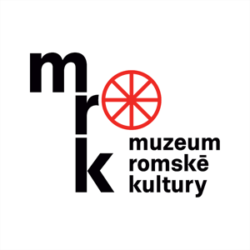Jan Horváth
Jan Horváth, born 1923, Miroľa, Svidník district
-
Testimony abstract
Jan Horváth had three brothers and four sisters, his father was a blacksmith and local people respected him. They were the only Roma family in the village, and the father of Jan Horváth was born there too.
Jan Horváth was about sixteen years old when he was called up in Svidník. He said it was probably in October 1939, because they were lifting potatoes in the fields at that time. Only Roma were conscripted. Horváth spent about half a year in the Petič labour camp in Hanušovce nad Topľou. The women, including Horváth’s mother, secretly brought them food. Jan Horváth remembered there were fewer Slovaks among the predominantly Roma prisoners; he remembered the low food rations, the beatings, the dirt, the ever-present lice and bedbugs, and also mentions working the whole day laying rails. He describes how the cook added pills to their foods so they wouldn’t feel hungry – after which, according to Horváth, they all swelled up. On Sundays they went to church and cleaned up the camp. Some of the old men inflicted injuries on themselves in the hope they would be released. Jan Horváth was later transferred for half a year to the labour camp at Dubnice nad Váhom, which was at that time intended only for men. He described the better conditions they had in the barracks; however, they had to undertake heavier work and if they failed to complete their norms they were often beaten and received smaller food rations. According to what he said he had it somewhat better there thanks to the non-Roma commander of the platoon[1] from Bratislava, who repaired the gendarmes’ motorbikes. He helped the commander clean the parts and for that secretly received some of his food. From this camp Horváth travelled to enlist in Ilava. He could spend three days at home before he joined the army in Trnava and in Bratislava, where the Germans disarmed them and drove them to Lopašov near Piešťany to dig trenches. From there he fled to the partisans with some other people, among whom was a non-Roma lieutenant.[2] They hid there for maybe a week; after the front had passed they were able go to Lopašov, where the Russians who were there already ordered them to bury the fallen soldiers. With a permit from the Russians, Horváth then went on foot to Prešov with four Roma and one Slovak, where he presented himself to the Red Cross and got something to eat.
After the war Jan Horváth received a post-war order to enlist in the Czechoslovak Army. He was sent to Nitra, Komárno and Cheb. He began to live with his wife when he was 25.
How to cite abstract
Abstract of testimony from: HÜBSCHMANNOVÁ, Milena, ed. “Po židoch cigáni.” Svědectví Romů ze Slovenska 1939–1945.: I. díl (1939–srpen 1944). 1. Praha: Triáda, 2005. ISBN 80-86138-14-3, 451-460 (ces), 461-469 (rom). Testimonies of the Roma and Sinti. Project of the Prague Forum for Romani Histories, https://www.romatestimonies.com/testimony/jan-horvath (accessed 4/24/2025) -
Origin of Testimony
The interview was held in the home of Jan Horváth and his wife Márie Horváthová, who made a considerable contribution to the interview. It was Helena Demeterová, née Horváthová, who led the interviewer to Horváth; her mother was Mária Horváthová, her stepfather Jan Horváth. Helena Demeterová is the wife of Bertín Demeter[1] and the sister-in-law of Vasil Demeter.[2]
Mária Horváthová was married as a girl to a young man in a well-to-do musical family, chosen for her by her parents. She left the relationship from her own choice when she was pregnant. Her parents then married her to Jan Horváth from a poor, distantly-related blacksmith’s family. Marie’s first-born daughter Helena was raised by her grandparents and after her grandmother’s death as a nine-year-old went into service with a farmer.
In the part devoted to his enlistment in Komárno it is probable that Jan Horváth is actually talking about the last military service he performed after the end of the war.[3] The editor points out that the interviewees often define their experience of the war by other historical events than are usual. For many of them it did not end with the defeat of Nazism but later. From the labour camps they were often transferred directly into Tiso’s army, in some cases to the armed insurgent forces. After that they were enlisted in the new Czechoslovak army, from which many were not discharged until 1946–1947.
-
Where to find this testimony




